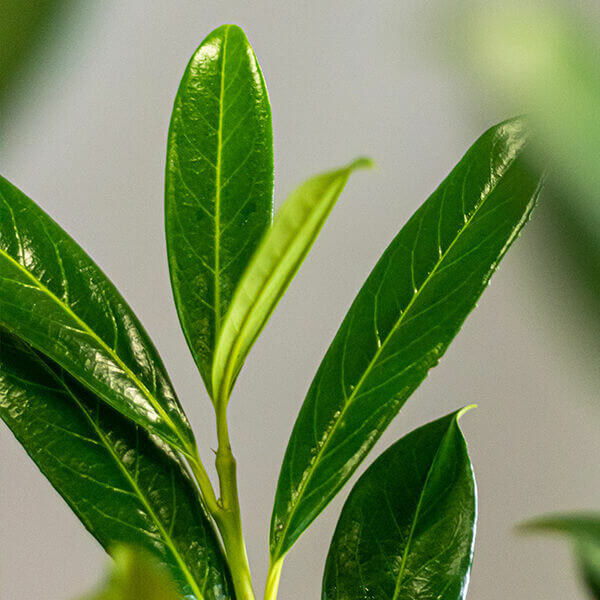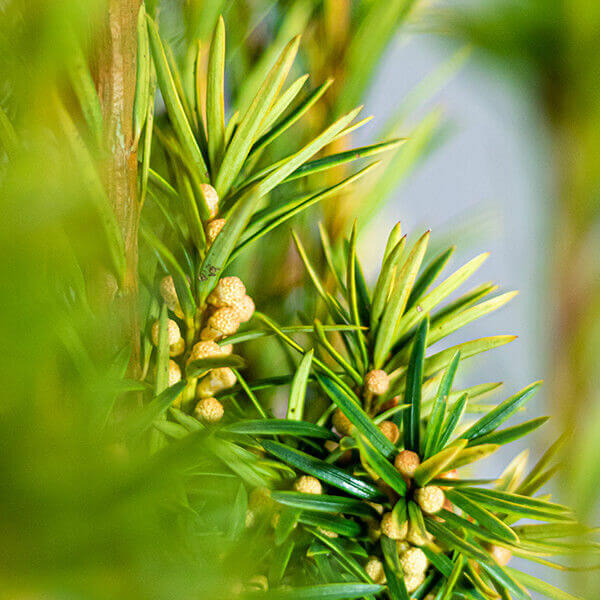Hedge Plants For Natural Landscapes
Hedge Plants For Natural Landscapes
Blog Article
Best Hedging Plants For Raised Beds
Boost your garden's attraction with lush hedge ranges such as Yew (Taxus), Thuja, Laurel, Photinia, and Bamboo, celebrated for their structural stability and environmental benefits.
Yew and Thuja provide evergreen protection and winter durability, while Laurel uses rapid development and broad, aromatic leaves.
Photinia adds seasonal appeal with its lively red foliage, and Bamboo lends a low-maintenance, peaceful atmosphere.
These hedges enhance air quality, decrease sound, and develop tranquil, private spaces.
Appropriate planting, spacing, and upkeep ensure vigorous development and eco-friendly consistency.
Explore how these lush varieties can raise your garden's appeal and well-being.
Key Takeaways
Transform Your Garden With Lush Hedge Varieties
- Select Yew for its thick, evergreen development and unparalleled longevity.
- Choose Laurel for its quick development and broad leaves, making sure fast personal privacy.
- Choose Photinia for its vibrant seasonal foliage, which turns a striking dark red.
- Utilize Bamboo for a low-maintenance, winter-hardy hedge with aesthetic appeal.
- Area plants 2-3 per meter and prune frequently for optimum development and health.
Popular Hedge Plants
When changing a garden with lush hedge varieties, it's important to consider popular hedge plants such as Yew, Thuja, Laurel, and Photinia due to their unique characteristics and benefits.
Yew (Taxus) is highly esteemed for its longevity and thick, green development, making it a prime option for enduring landscapes.
Thuja is noted for its evergreen foliage and robust winter durability.
Photinia adds seasonal vibrancy with red leaves that darken gradually, producing vibrant visual appeal.
Laurel provides fast growth and fragrant, broad leaves, ideal for fast personal privacy.
Furthermore, Bamboo is an exceptional option for atmosphere, providing a low-maintenance, winter-hardy option that enhances the garden's visual with its classy, swaying walking sticks.
These selections cater to a range of horticultural requirements and preferences.
Benefits of Garden Hedges
Garden hedges use a plethora of benefits, making them a valuable addition to any landscape. These natural barriers are affordable to carry out and supply considerable wind protection, boosting air flow and contributing to sound decrease. The dense foliage of hedges like Thuja and Beech makes sure privacy by blocking exposure, creating a remote and peaceful environment.
Hedges also play a vital role in microclimate policy, providing a steady environment that promotes plant development and lessens temperature variations. Their elaborate leaf structures filter toxins, improving air quality and adding to a healthier garden environment.
Moreover, hedges stand out in noise reduction, soaking up and deflecting sound waves to lower ambient sound levels. This double functionality of supplying both visual and acoustic personal privacy enhances the general harmony and aesthetic appeal of any garden.
Planting and Upkeep Tips
For an effective hedge, meticulous preparation of the planting area is vital. Ensure the soil has appropriate pH and drain to support strong root advancement.
Space the plants appropriately for the picked types. Water the hedge frequently during its preliminary development phase, adjusting as needed with seasonal modifications.
Carry out a systematic pest control and disease avoidance method, utilizing chemical or organic treatments when required. Routinely examine for aphids, termites, and fungal infections.
Apply mulch to maintain moisture and suppress weeds. Seasonal pruning promotes dense growth and air flow, vital for plant health.
Following these standards will assist you cultivate a lively, properly maintained hedge that enhances the beauty of your garden.
Spacing and Trimming Guidelines
Spacing and Trimming Guidelines
Appropriate spacing and cutting are vital for cultivating healthy, aesthetically appealing hedges. Appropriate spacing ensures each plant receives sufficient nutrients, light, and airflow.
Follow these guidelines for optimal hedge maintenance:
- Spacing: Position hedge plants 2-3 plants per meter to motivate robust growth.
- Pruning Methods: Routine pruning is essential for maintaining wanted hedge height and shape. Cut brand-new development in summertime and cut back older wood during winter.
- Seasonal Care: Change cutting schedules and approaches according to seasonal requirements to guarantee plant health.
- Hedge Height: Routinely monitor and cut to keep the preferred hedge height and accomplish uniform aesthetics.
Sticking to these steps will guarantee your hedge prospers, improving both the appeal and functionality of your garden.
Picking the Right Hedge
Selecting the Right Hedge
Selecting the proper hedge includes evaluating elements such as fully grown height, foliage density, and ecological resilience. Successful hedge plant choice requires understanding each types' growth attributes and site-specific flexibility.
For instance, Yew (Taxus) provides excellent longevity and thick development, while Thuja is noteworthy for its winter resilience. In addition, thinking about maintenance requirements is essential; fast-growing species like Laurel or Privet demand routine trimming, whereas low-maintenance alternatives like Bamboo or Ivy might be more effective for those seeking very little upkeep.
Ecological factors such as soil type, light availability, and wetness conditions need to also assist the choice process. This mindful approach guarantees the chosen hedges will flourish, supplying both practical and visual benefits to the garden landscape.
Delivery and Planting Advice
To ensure your hedge plants prosper, they should be provided by specialized couriers and planted immediately upon arrival.
Follow these essential actions for successful planting:
- Soil Preparation: Enhance the soil with raw material to enhance drain and nutrient material.
- Planting Depth: Develop a trench two times the width and equivalent to the depth of the root ball.
- Watering Strategies: Water completely after planting, keeping the soil regularly wet however not filled.
- Mulching: Use a layer of mulch to keep wetness and suppress weeds.
Customer Support and Service
Offered the crucial function of prompt support in horticultural pursuits, our consumer assistance group is readily available 6 days a week through telephone, e-mail, and social networks to provide professional recommendations and quickly deal with any issues. Their devotion to fast reaction times ensures consumer satisfaction by resolving questions associated with plant health, optimal planting approaches, and upkeep schedules.

-------------------
Within 24 hours
This thorough support group, enhanced by an excellent 9.3/ 10 consumer ranking, highlights our dedication to improving the gardening experience for each client.
Often Asked Questions
How Long Does It Consider Hedge Plants to Develop?
Hedge plants normally require one to three years to end Browse this site up being fully established, with the specific period varying by species and growing conditions.
Reliable care throughout this vital period is vital for robust growth. Consistent watering, alert weed control, and suitable fertilizer application are pivotal in promoting strong root development.
For instance, fast-growing species like Laurel might develop faster, while slower-growing ranges such as Yew may take longer. Diligent upkeep accelerates the establishment procedure, resulting in dense and healthy hedges.
What Are the Best Hedge Plants for Privacy?
The concern of the very best hedge plants for personal privacy includes assessing evergreen and deciduous choices.
Evergreen hedges like Thuja, Laurel, and Cypress provide year-round coverage, ensuring continuous personal privacy.
On the other hand, deciduous hedges such as Beech provide seasonal privacy, shedding leaves in colder months.
Secret upkeep suggestions for privacy hedges consist of regular cutting, fertilizing in spring, and correct spacing-- usually 2 to 3 plants per meter.
Furthermore, constant watering and persistent weed removal are essential for promoting healthy, dense development.
Can Hedge Plants Draw In Wildlife to My Garden?
Yes, hedge plants can attract wildlife to your garden by offering important advantages like shelter, food, and nesting sites, therefore improving regional biodiversity. For example, yew, holly, and laurel are outstanding for bring in birds, while ivy supports a variety of pests.
However, it is necessary to keep in mind that there are some drawbacks, such as increased maintenance to handle pests and routine maintenance. Carefully picking and maintaining hedge ranges can assist balance these disadvantages and advantages, ultimately promoting a lively and sustainable community in your garden.
Exist Any Flowering Hedge Plants Available?
Yes, there are flowering hedge plants offered that can boost the beauty of your garden.
For example, Elaeagnus, likewise called Olive Willow, produces fragrant white flowers in the fall, adding a touch of sophistication.
Photinia, another popular option, showcases vibrant red leaves that develop into an abundant green, developing a vibrant visual effect throughout the seasons.
To guarantee these plants thrive, it's important to practice correct pruning techniques and seasonal maintenance, such as trimming new development in the summer season and cutting down in the winter.
These measures will help maintain the health and aesthetic appeal of your flowering hedges.
How Do I Prevent Insects in My Hedge Plants?
To prevent insects in hedge plants, use natural bug control approaches and maintain proper hedge care. Introduce beneficial insects like ladybugs, which prey on harmful pests, to create a balanced ecosystem.
Regularly inspect your hedges for signs of invasion and quickly remove any affected parts to avoid the spread. Guarantee the health of your hedges by using well balanced fertilizers and supplying appropriate water.
Make use of mulching to keep soil moisture and proper spacing to reduce plant tension and promote robust development. These practices jointly help in minimizing pest concerns and keeping a healthy hedge.
Conclusion
In essence, selecting the best hedge varieties such as Yew, Thuja, and Laurel can change any garden into a relaxing sanctuary. These plants offer year-round greenery, enhance visual appeal, and offer practical advantages like noise reduction and wind defense.
Appropriate planting methods, accurate spacing, constant watering, and seasonal trimming are vital for optimum growth.
Reputable delivery services and skilled client support ensure a smooth experience from purchase to planting, making it simpler than ever to raise your outdoor area.
Garden hedges offer a multitude of advantages, making them a valuable addition to any landscape. These natural barriers are cost-efficient to execute and provide considerable wind protection, improving air circulation and contributing to sound decrease. The dense foliage of hedges like Thuja and Beech makes sure privacy by blocking visibility, creating a remote and serene environment.

Pruning Strategies: Regular pruning is important for maintaining preferred hedge height and shape. Trim brand-new growth in summer and cut back older wood throughout winter.
Report this page